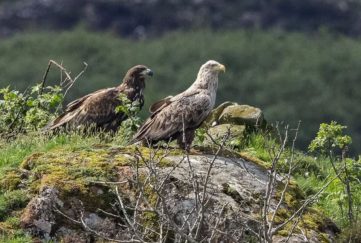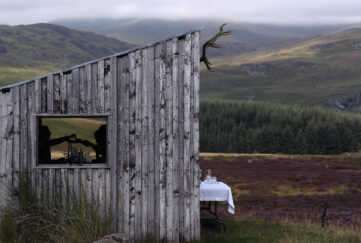A Flash Of Fire – Green Woodpecker
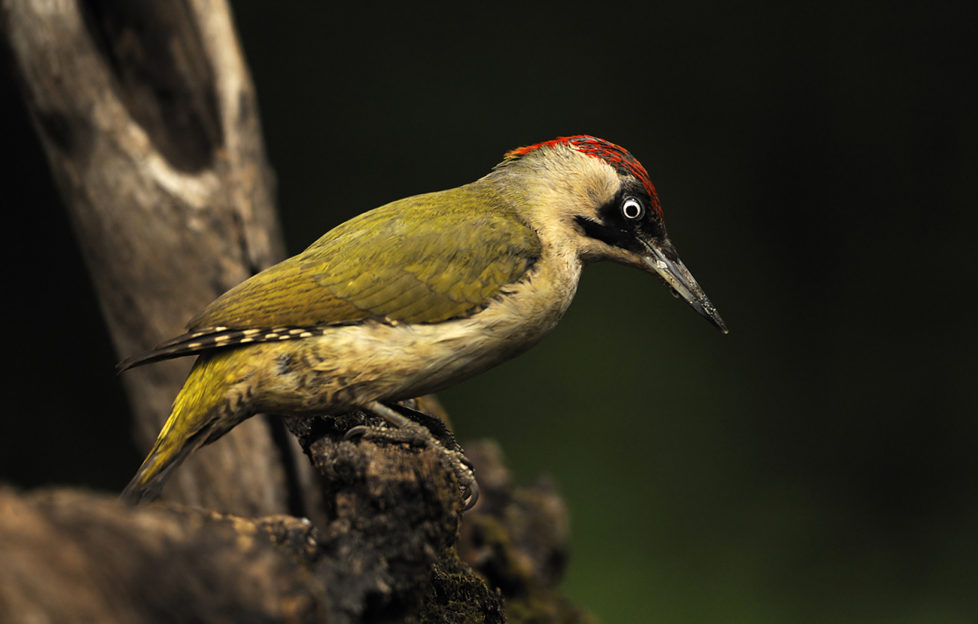

Jim Crumley
A startling encounter with the green woodpecker gave Jim Crumley pause for thought
NOVEMBER was playing at volcanoes up on the mountain. It lathered the flanks with mist that lolled and rolled and tumbled unpredictably at the whim of a half-hearted breeze.
The sun was lazier still, apparently unaware that the weather forecast had promised sunshine by noon. Now at a little after 3pm it looked to me as if the day was going downhill headlong, sunless and ever deeper into the greyest grasp of deepest November.
Meanwhile, as befits volcanic inconvenience, all air traffic was grounded. I had seen one robin in a bramble bush and a hunched pair of bullfinches with their backs
to me, which is not a lot to show for two hours of walking in wild country.
Eventually, I crossed the glen to its lower-lying and more open side. Here I climbed up through oak trees cluttered with clusters of old foliage the colour of cold tea, much of which will cling on right through the winter. Why do oaks do that?
The mist was thinner beyond the trees from where, on any day when views are possible, there is a wide prospect of the Trossachs hills. Holes appeared in this thinning veil, through which I could see back across the glen to the mountain mist, so the view was of thin mist and thick mist.
There is a fine rowan near the edge of the wood just where it relents into open ground of undulating rough pasture. I stopped to look at it as I have done many, many times. Something of the day’s lethargy had infiltrated my bones and my spirit by this time. I decided to sit on a rock and drink my coffee while I looked at the rowan, and then I would go back.
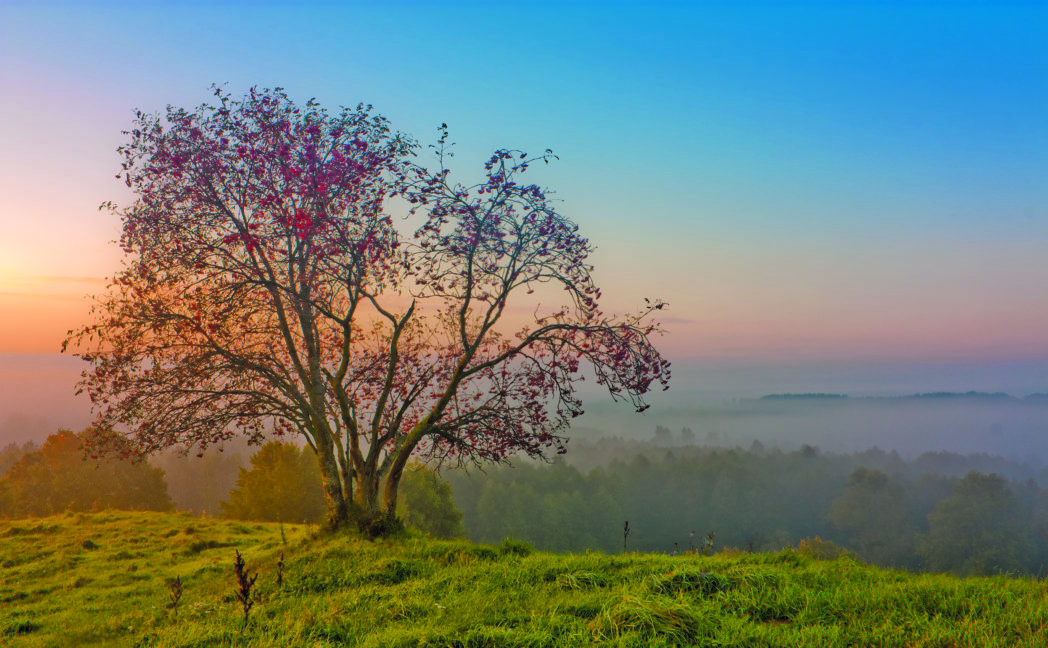
“Some days are diamonds, some days are stones.”
The rowan held a few old leaves, pale yellowy-gold mottled with brown by now, and a surprising amount of berries, although these were dark and far past what a rowan-jelly-maker might call their best. But without them, what happened next simply would not have happened.
I scoured the tree and the open ground beyond – the little of it I could see – with the binoculars, searching in vain for something to focus on, some vagrant scrap of life to thwart the evil twins of cold and lethargy that had taken the day by the throat. Even the drink in my hand was having trouble being persuading to taste of coffee.
I was reconciling myself to the essential truth of an old John Denver lyric that had just insinuated itself into the forefront of my mind from its forgotten lair in one of the stoorier nooks where I let such things lie: Some days are diamonds, some days are stones. The relentlessly lifeless greyness of the day had “stone” written all over it.
Then I became aware in a vague sort of way that something seemed to have changed out on the grass a dozen yards or so beyond the rowan. Something small and low-down and as yet shapeless, and not obviously different in texture and tone from the rough pasture hillside, except that it seemed to be moving, furtively and head-down. Much of the movement of the whatever-it-was was obscured by grass in clumps and tussocks and humps; I was assuming at this point that the thing had a head. All discernible movement ceased, and I suspected a trick of the half-light.
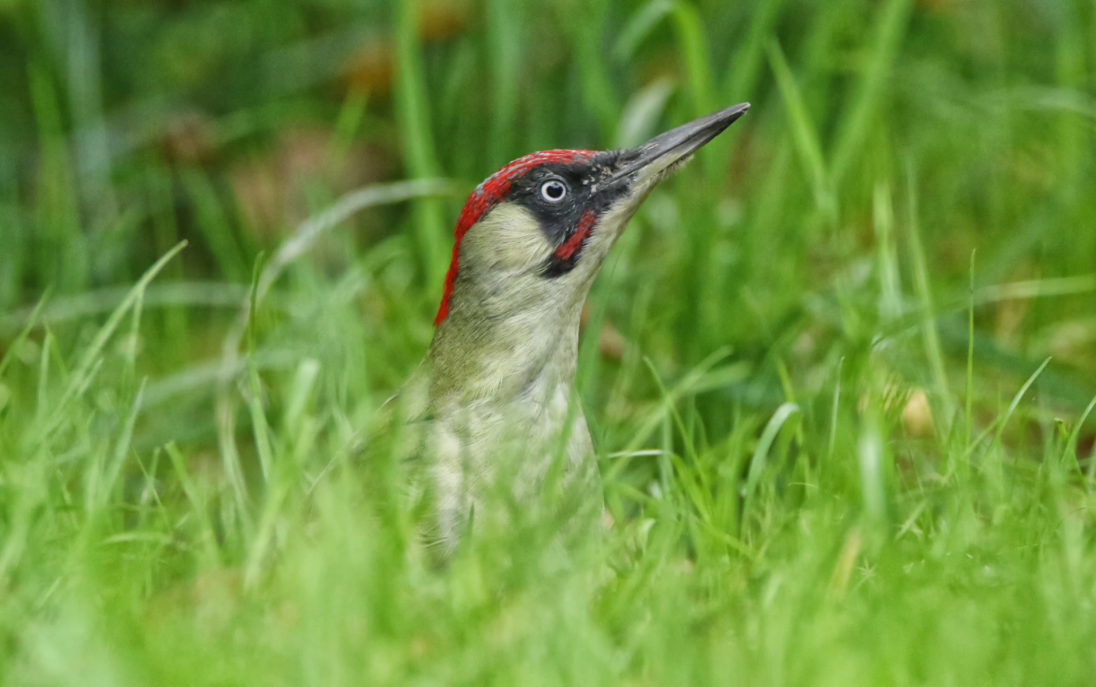
A Flash Of Fire
Then something seemed to galvanise. There was a flash of fire that seared through the lowest airspace just above the grass, came straight towards me at eye level, then veered abruptly upwards and left into the rowan tree where it metamorphosed before my startled eyes into a perched green woodpecker.
“Green woodpecker” is a singularly unfulfilling description of the bird. It is, I conceded, arguable that it is greener than other European woodpeckers, but it is also yellow and black and white and – crucially, vividly – red. “Flash of fire” is a better description by far, and I wish I could claim that I and I alone had invented it. In fact, all I have done is to translate it – from Gaelic.
Lasair-choille is the Gaelic name. Coille is simply a wood. Lasair is fire, flame, flash, in any combination that fits the context. In the context of that moment before that rowan tree on that mistily restless hillside, a “flash of fire” was exactly what had just illuminated my stony grey day.
Besides, as I now know, if your woodpecker arrows up from obscurity on the ground and comes at you at eye level, it is not a green bird at all that you see but a red and white one – red skullcap, and cheeks in the male, white chest. In much the same way, a head-on kingfisher is a brown bird, and only the water beneath it and the way is flying suggests that it might be what it obviously is if you see it from any other angle at all. And if there was any justice in the nomenclature of the world’s birds at all, the green woodpecker would have a kingfisher-ish name, something worthier of its fire-flashing potential.
Meanwhile, up in the rowan tree, something stirred.
A berry-eating woodpecker
Every bird book you ever saw, and probably all the others as well, will inform you with absolute certainty that all green woodpeckers eat is ants, that ants control every facet of their wellbeing or otherwise, especially ants like the ones that throng the top few inches of the earth beneath the grass of old unimproved pasture like that one beyond the rowan tree. If the ants prosper, so do the green woodpeckers. And vice versa, naturally.
They will tell you too that the bird is purpose-built to eat nothing but ants, a stabbing beak to open the earth in cone-shaped grooves, and a cunningly stowed-away four-inches-long tongue designed to unearth the astonished ants in improbable numbers.
The same technique also works in rotten trees where the woodpecker’s huge feet allow it to perch vertically like its greater and lesser-spotted woodpecker cousins. Again, ants are the essential quarry. If the bird book happens to specialise in Scottish birds, it may add that the green woodpecker is open to occasional forays into the Speyside pinewoods where catching ants around the waist-high anthills is its equivalent of shooting fish in a barrel. The book may not use those words, but that will be the gist.
Evolving Diet
Never once have I seen such a book acknowledge the possibility of a non-ant diet. Yet this one at the far end of my binoculars was eating rowan berries. It also proved remarkably adept at the berry-picking, which suggested to me, if not to the bird book compilers, that it had done it before. Even out-on-a-limb, even out on the outermost edges of out-on-a-limb, it negotiated the slenderest of twigs in a slow, sideways glissade to reach the berries at the end, perfectly poised, sure of itself and its technique. It was clearly relishing the non-ants that clustered there, the fruits of its labours.
I thought about this, about the why and the wherefore, and it took about half a minute of thinking to come to the following conclusion. The green woodpecker is accustomed to ground feeding – for ants – but in the course of ground-feeding for ants all it has to do is to stray somewhere near a rowan tree in summer or autumn to find windblown bunches of downcast, eye-catching rowan berries in its path. One speculative stab of that expert beak yielded a tasty morsel, so it ate all the berries on the ground.
It then turned its head sideways to look up – this is a bird that nests in trees, remember, and therefore understands perfectly that berries and nuts and leaves lying on the ground mostly come from above, from trees. And there is the rowan tree, one grey, breathless, misted November day when the ants are few and far between, and there are enough berries to keep body and soul together, and if you scavenge that fretwork of branches often enough, you get very adept at it.
It is equally possible, I suppose, that the green woodpecker has watched its spotted cousins gather autumn stashes of pine cones by carrying them individually to an “anvil” rock where it thrashes them open, plucks the seeds and chucks away the cones. This the spotted woodpeckers do in the lean months when the oak trees are not as replete with ants as they are in the spring and summer. Might not the greens resort to the same food source for the same reason? I don’t know because I have never seen it, and if the compilers of my bird books know, they’re not saying.
Yet here’s a thing: the Gaels distinguish between green and spotted woodpeckers not by their utterly different colour schemes but by their characteristic behaviour, the flash of flame for the green, but the great-spotted woodpecker is snagan-daraich, the knocker on wood, and specifically on oak.
They were good, were they not, the old Gaels, when it came to naming the creatures that shared their world? My favourite is the jay – screuchag-choille, the screamer of the woods. I suppose they might have come up with something like the giggler of the woods for the green woodpecker for its far-carrying, raucous guffaw sounds
as if it might have escaped from a 1950s recording of The Goon Show.
Yet luckily for all of us, or at least luckily for me, the bird-namers came up with lasair-choille, and the flash of flame that turned my day of stones into a day of diamonds.
You can read more of Jim Crumley’s Scottish wildlife columns
online here, and each month in The Scots Magazine.



